Rats are amazing, diverse creatures with an intelligence level that rivals cats and dogs.
Hi, my name is Megan, and rats are one of my favorite domesticated animals.
They’re empathetic, smart, and incredibly fun to train and play with – what isn’t to love?
One thing that most people don’t know – novice rat owners included – is that there are different varieties of rats, and, like dogs, it’s important to make sure you pick one that fits your lifestyle.
Variety Versus Breed
Before I jump into telling you all about the different rat varieties and how to pick the best one for you, I want to tell you a bit about how rats are classified.
You see, like dogs, rats come in a variety of fur types and colors, but they all belong to the same species, Rattus norvegicus.
However, unlike dogs, rats aren’t classified by breeds, they’re classified by varieties.
A breed refers to an animal with a unique shape, size, and coloration, such as a German Shepard. On the other hand, a variety refers to characteristics such tail presence, ear position, and fur texture.
While there aren’t any large differences between the terminology – unless you’re a biologist – it never hurts to know! Just to keep things from getting confusing, though, I’ll be referring to them as breeds.
Now since that’s out of the way, let’s get to the fun part: the different breeds of rats!
Different Types of Pet Rat Breeds
The American Fancy Rat and Mouse Association officially recognizes 7 different varieties of rats, each one with a different fur texture or tail.
1) Standard
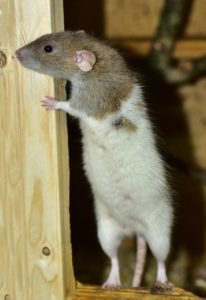 What Makes Them Unique
What Makes Them Unique
These are your, well, standard, rats. When you think of a domesticated rat, this is probably the one you think of first.
They’re known for their short, smooth fur and straight whiskers.
Despite this, there are differences between male and female rats; male rats have longer, coarser fur while females have softer, finer fur.
Possible Colorations
These rats are found in only a few colorations – which will be discussed more below.
Special Considerations
Standard rats don’t have any special needs or considerations.
Recommended Owner Level
Due to their simplicity and lack of special considerations, standard rats are one of the easiest varieties, making them perfect for beginner rat owners.
2) Rex
What Makes Them Unique
If I were to describe rex variety rats in one word, it would be this one: ‘perm’. These rats are nothing but giant balls of curly fur.
These are probably my favorite variety just because they’re so cute.
Their fur is extremely curly throughout their body – though the belly more closely resembled that of a standard rat. Even their whiskers are curly!
Male rats tend to have better, healthier fur than the females, though. In either gender though, the density and tightness of the curl varies.
One rex rat may have tight curls while another may have just the hint of a wave.
Possible Colorations
Like standard rats, rex rats must conform to a few certain colorations and patterns to be true rex rats.
Special Considerations
Rex rats are another fortunate variety as, like the standard rat, they don’t have any significant health issues.
Recommended Owner Level
These rats are also very good for beginner or first-time rat owners. They are also a great rat if you want to get into rat showing as, even though they can be difficult to breed, their curly fur is a fan favorite.
3) Hairless
What Makes Them Unique
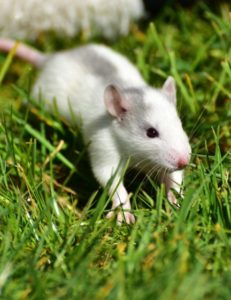 What makes these rats unique isn’t their hair texture but rather their lack of! Just like the name says, hairless rats are completely, well, hairless!
What makes these rats unique isn’t their hair texture but rather their lack of! Just like the name says, hairless rats are completely, well, hairless!
You can just go ahead and consider them the rodent version of a sphynx cat.
Possible Colorations
You may think that hairless rats would have any coloration, but they do! That’s one thing that I think makes them extremely interesting.
Though, for the most part, you’ll only find them in pink with wrinkles as accessories.
Special Considerations
Hairless rats are highly susceptible to a lot of different issues. First, due to the fact that, again, they’re hairless, they don’t have any fur to help them regulate their body temperature in colder temperatures.
This means that you’ll probably have to either invest money or learn to crochet them sweaters.
They also will need these sweaters to help prevent any of the scratches that hairless rats tend to receive so easily and sunburn.
Because it is so easy for this variety of rats to become injured, you’ll have to take extra precautions to make sure that their bedding and cage is free of any sharp edges.
It’s also important to consider this fact if you plan to keep them with other rats.
As a final consideration, hairless rats are susceptible to more diseases than other varieties, so you’ll need to be prepared to contact your vet when necessary.
Recommended Owner Level
These rats have a lot of health problems and conditions, and they need a lot of special care.
Because of this, even though they are the best rat for owner’s with allergies, I don’t recommend a beginner try and take them on.
This is one rat that’s needs an experienced owner who is prepared to prevent and cure any issues that arise.
4) Tailless
What Makes Them Unique
I bet you can’t guess what makes these rats special. That’s right, these are the manx cats of the rodent world.
Rats are known for their signature ‘bald’ tails, so seeing one without a tail may be a little startling at first, but these rats are just as sweet and playful as their tailed counterparts.
Possible Colorations
Like most of the other rats on this list, tailless rats could be any color.
Special Considerations
Due to the fact that they lack a tail, these rats have a different skeletal system than other rats and have a possibility of developing pelvic issues later in life.
They also have more bowel and bladder problems than other rats.
Recommended Owner Level
For just the average rat owner, these are a pretty good pet. While you don’t have to be an advanced owner, I don’t recommend these for first time owners, just due to the fact they require different care.
If you’re planning on breeding your rats, I would not attempt to breed tailless rats unless you’re an expert and have experience breeding rats.
These rats are highly susceptible to genetic mutations and deformities which can lead to complications.
5) Satin
What Makes Them Unique
 Satin rats are the beauty queens of pet rats. Their fur smooth and lustrous, with high shine.
Satin rats are the beauty queens of pet rats. Their fur smooth and lustrous, with high shine.
Some of the colors in the fur will even sparkle, and any white will appear golden. Their whiskers have a least a slight wave and can even be curly like a rex rat.
Possible Colorations
Satin rats can come in any color. With their beautiful coats, you can also expect every color to look fantastic on them, making them a good show animal.
Special Considerations
Due to a pug style nose that occurred when the first satin rats were being bred, as well as a disposition to common illness such as thrush and the sniffs, which is a type of pneumonia, satin rats suffer from a lot of respiratory problems.
Recommended Owner Level
Due to the fact that satin rats are vulnerable to respiratory infections and problems, I wouldn’t recommend that a beginner take them on.
However, I also don’t think they require as much care as a hairless rat, so an apprentice/midlevel rat owner would be best.
6) Dumbo
What Makes Them Unique
Dumbo rats aren’t defined by their color, fur patterns, or even their tails. Instead, these lovable rodents are defined by the position of their ears!
Dumbo rats, like their name suggests, have large, round ears that are set low on their head.
If you were to look at them from above, their heads form an equilateral triangle (a triangle where all three sides are equal).
Possible Colorations
Like the other rats mentioned so far, dumbo rats can come in any color.
Special Considerations
Dumbo rats are more prone to become obese than other rats, so make sure that you feed them a balanced diet.
Recommended Owner Level
Dumbo rats are one of the most common rats for first time owners due to their mild temperament and teddy bear like appearance. Because of this, I recommend them for all experience levels.
7) Bristle
What Makes Them Unique
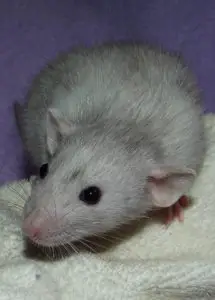 So, I’ve compared nearly every rat on this list to a different animal, and I don’t see a point in stopping now!
So, I’ve compared nearly every rat on this list to a different animal, and I don’t see a point in stopping now!
The bristle rat, like the name suggests, has a wiry coat similar to a terrier!
If you don’t like that comparison, you can also relate their coarse fur to that of a wire bristle brush.
They’ll start out looking a bit like rex rats with wavy or curly fur, but, as they age, it’ll straighten out to the messy, rough coat that lets you know that the rat you’re looking at is a bristle.
It may be a bit harder to tell with a female, but a male has an extremely wiry coat that you won’t mix up with any other breed.
Possible Colorations
Bristle rats are available in all colorations and patterns.
Special Considerations
Bristle rats don’t pose any special considerations for the average rat owner. For those looking to breed, though, remember that the bristle gene is dominant.
Recommended Owner Level
While they may look a bit scary with that straight, coarse fur, bristle rats aren’t any harder to keep than other rats, making them a great pet for all experience levels.
Different Types of Rat Fur Coloration
Of those 7 recognized varieties, there are also 40 different fur colorations and patterns! These 40 colors are divided into 5 main categories.
Self
With self-coloration, your rat will be one solid color. This solid color can be any of 16 colors ranging from beige to blue to black to white.
Any Other Color
This one can be a bit more difficult to spot. With any of color style coloration, your rat’s coat overall will be one color, but the individual hairs can be banded with multiple colors.
The most common form of this is agouti but can be various styles including pearl.
Any Other Color Pattern
This is similar to any other color, but instead of just two colors, any other color pattern style coloration features more than two colors arranged in a certain patterned.
This is where we find our Siamese style rats, along with a few complex agouti styles.
Silvered
It’s time to bring back my analogies. These rats are the grandparents of the rats; they come in a variety of colors, but they all have white or grey hairs dispersed throughout their coat. It can be either faint or drastic.
Marked
Like the name says, marked rats have different markings. There are actually 12 different possible markings.
English Irish
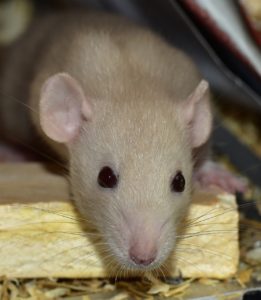 These rats have a white equilateral triangle on their chest.
These rats have a white equilateral triangle on their chest.
Irish
These are one of my personal favorites. They have an evenly shaped white marking on their bell, white ‘socks’, and a white tail tip.
Down Under
These rats have corresponding marks on both their back and bellies.
Berkshire
These are another favorite of mine. They have a completely white belly, white feet, a white tail, and a small white spot in between their ears.
Essex
These look just like the Berkshire rats, but their color is faded.
Variegated
These rats look like they were attacked with a paintbrush with multiple color splatches around their body.
Blaze
This coloration only coexists with Berkshire and Variegated rats. With this, they have a white wedge stretching from the tip of their muzzle to their ears, much like a dog.
Dalmatian
Just like the dog, these rats have shapeless black colorations along their body.
Hooded
These rats are white with a colored head and shoulders and an unbroken colored striped that runs down their spine.
Bareback
Like the name suggests, these are Hooded rats that lack the spine marking.
Capped
These rats have a white body and a colored head that does not stretch past their head.
Masked
Bandit would be a good name for one of these rats thanks to their white body and small splotch of color that only surrounds their eyes and face.
How to Pick the Best Rat Breed for You
 It’s important to consider the needs of each and every rat. Some varieties are more susceptible to diseases and element-based conditions than others.
It’s important to consider the needs of each and every rat. Some varieties are more susceptible to diseases and element-based conditions than others.
Take the hairless rat for example. While a great choice for rat owners with allergies, hairless rats lack the fur that keeps other rats warm and safe.
As a result, these rats, like we saw earlier in this article, are highly susceptible to the cold, sunburn, injuries, and even a variety of healthy issues.
When picking out a new rat, here are the things you need to take into consideration.
Other Pets
This isn’t a huge deal for most varieties of rats so long as you don’t let them run free with your cats, but for the hairless variety, this is a big factor to take into consideration.
Since it is so easy for them to become injured, you’ll need to put a lot of thought into whether or not you want to cage them with other rats.
Climate
Some rats need special climates. The hairless rat doesn’t do good in cold, dry weather and rats with denser fur, like some rex rats, would be uncomfortable in extremely warm, humid climates.
Also, due to the fact that satin rats are highly susceptible to respiratory conditions, a cold, humid climate could increase their chance of developing sniffs.
Bedding
Hairless and tailless rats need special bedding due to their anatomy.
Hairless rats are highly susceptible to injuries such as scratches, so it’s important that you make sure the bedding in their cage is free of any sharp edges.
As for tailless rats, they tend to suffer from bathroom issues, and they can be a bit messier, so it’s important to use bedding that you will be able to clean often.
Available Time
Rats may seem like a low maintenance pet, but that isn’t always true.
Hairless rats need regular grooming – and even the occasional bath – to keep their skin, hydrated and free of cracks, rashes, or scratches.
Tailless rats will need their bedding cleaned often, and, occasionally, they may need help wiping their rumps.
Overall, though, rats are intelligent and compassionate animals that form strong bonds, so you’ll need to be able to set aside quite a bit of time to make sure their needs – including their emotional ones – are met fully.
Experience
Not every rat is suited for beginners. First time rat owners should probably stick to some of the easier varieties such as standard and rex rats.
Varieties like hairless and tailless are more suited for more experienced owners.
If you’re looking to breed your rats, it’s best to stick with standard rats if you’re a beginner.
Rex and tailless rats are the hardest to breed due to the complicated genetics and probability of abnormalities.
Final Thoughts
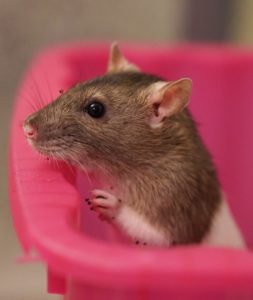 There are so many different types of rats with so many possible colors that picking the perfect one for you and your lifestyle can be difficult.
There are so many different types of rats with so many possible colors that picking the perfect one for you and your lifestyle can be difficult.
However, the most important thing to remember with rats, just like with any other pet from cats to goats, is that, even though they are unique individuals with different personalities, each breed has set characteristics.
It’s important to consider things such as temperament, required grooming, health issues, and, if you plan to breed them, genetic abnormalities.
You also need to evaluate your own life and consider things such as your home, your other fur babies, and your available time.
Whichever rat you end up choosing, just know that you’ll be picking a lifelong companion that will offer you endless love and quality time, regardless of breed.
